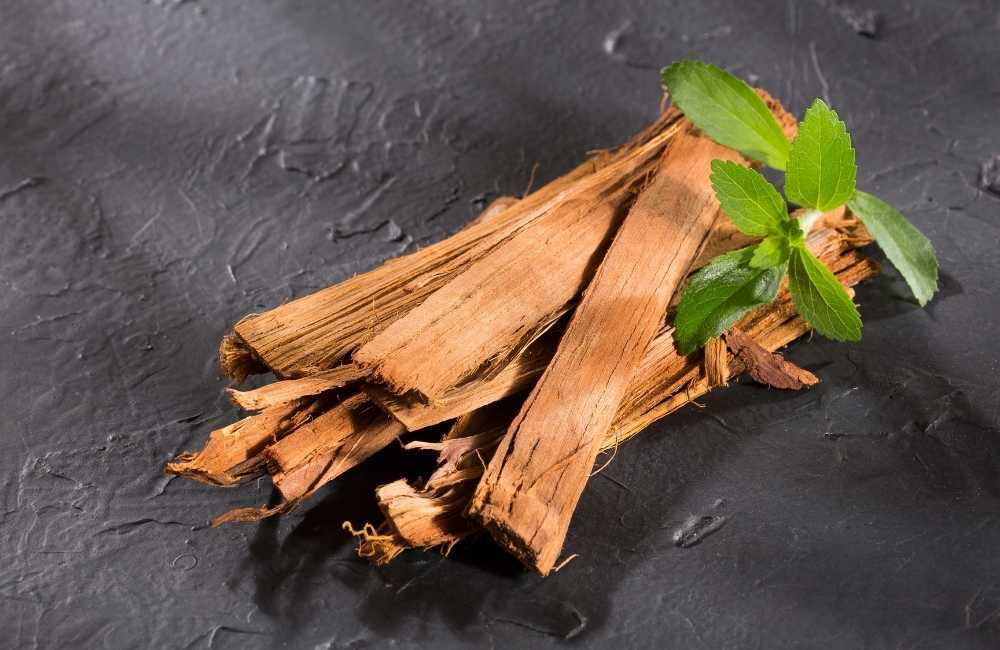Cat’s claw (Uncaria tomentosa) is a woody tropical vine found primarily in Peru, Columbia, Ecuador and Panama. It can grow up to 30 meters tall. This name was given because of the resemblance of the plant’s hooks or thorns to the cat’s claws.
There are two most common varieties namely the Uncaria tomentosa and Uncaria guianensis but the former, which we are concentrating on, is the type often used in the US as a supplement due to its alleged health benefits while the latter is mostly used in Europe.
Its uses date back to 2,000 years. The indigenous people of South and Central America used the bark and root to prevent and treat certain health problems.
Chemical Composition of Cat’s Claw
The interest in the specific phytochemical composition of Cat’s claw comes from the plant’s long history of medicinal use by indigenous people in the region. Peruvian tribes such as the Ashaninka, Aguarurna, Cashibo and Shipibo have used the plant for centuries to treat a multitude of ailments.
The phytochemical constituents of cat’s claw are divided into three classes: alkaloids, polyphenols, and terpenoids.
Many studies investigating the chemical composition have focused on the pentacyclic oxindole alkaloids (POA), tetracyclic oxindole alkaloids (TOA), quinovic acid glycoside(QAG) and polyphenols(PPPH).
Traditional Uses of Cat’s Claw
The history of the use of cat’s claw traditionally dates back to the Inca civilization. It has been used as a traditional medicine in the Andes to treat inflammation, gastric ulcers, rheumatism, dysentery, intestinal complaints and wounds. It was also used as a form of birth control.
The tribes of the Amazon have used it as a general tonic to promote good health for thousands of years. Modern science seems to be validating most of these claims and the reputation of Cat’s Claw as a “cure-all” herb through extensive research works especially on the bioactive constituents of the plant.

Health Benefits of Cat’s Claw
This herb contains many phytochemicals that are responsible for many activities that the plant elicits when consumed. Some studies have indicated that it:
-
May Boost Immune System
Cat’s claw supports the immune system to fight infections more effectively. Through research, it was discovered that the extract increased the number of white blood cells when consumed over some weeks. White blood cells are involved in combating infections in the body. So, this herb boosts your immune response and it equally calms an overactive immune system.
-
May Relieve Symptoms of Osteoarthritis
Osteoarthritis is a very common joint condition causing painful and stiff joints. In some studies, it was discovered that being on cat’s claw supplements for some weeks reduced pain during physical exercise but in combination with maca root (a Peruvian medicinal plant) reduced pain and stiffness in people with osteoarthritis. This is due to mainly its anti-inflammatory property.
-
May Relieve Symptoms of Rheumatoid Arthritis
Rheumatoid arthritis is a long-term autoimmune condition that causes warm, swollen, painful joints. Some studies suggest that cat’s claw can help relieve its symptoms. As with osteoarthritis, it is thought to reduce inflammation thus easing rheumatoid arthritis symptoms as a result.
-
Lowers High Blood Pressure
Traditional Chinese Medicine (TCM) has used this plant for centuries to treat high blood pressure. Some studies have shown that this ability to lower high blood pressure is largely due to the alkaloid component of the plant known as hirsutine. This alkaloid specifically acts as a calcium channel blocker.
This effect can lower the blood pressure by blocking calcium from entering the cells of the heart and blood vessel walls, whilst widening and relaxing the vessels themselves. This in turn helps the blood to flow in a healthy, smooth manner.
-
Improves Digestive Health
It is also very helpful in detoxification of the intestinal tract, whilst replenishing the friendly bacteria in the intestines. As a powerful anti-inflammatory, it is believed to fight the inflammation associated with several gastrointestinal problems. It can also be used to treat other digestive disorders, which include colitis, gastritis and peptic ulcers.
-
Supplement for Some Diseases
Today, Cat’s claw is promoted as a dietary supplement for a variety of health conditions, including viral infections (such as herpes, human papillomavirus and HIV), Alzheimer’s disease, cancer, arthritis, diverticulitis, peptic ulcers, colitis, gastritis, haemorrhoids, parasites, and leaky bowel syndrome.
How Cat’s Claw is Used
The leaves, the roots and the bark of this herb have all proven to have significant phytochemical content. The bark contains the most concentration of these bioactive constituents thereby making the bark to be considered the most medicinally useful.
Traditionally, the bark is made into tea or powder to be consumed over a given period depending on the illness. Standardized root and bark extracts are also available in either liquid or capsule forms.
Precautions for Cat’s Claw
The use of herbs as health tonics and for treating diseases is gaining more recognition in modern times. It is good to let you know that herbs, however, can trigger side effects and can interact with other herbs, supplements or medications. Herbs should therefore be taken with care, under the supervision of a health care provider.
- Pregnant or nursing women should not take cat’s claw because it may cause miscarriage.
- People with autoimmune diseases, skin grafts, tuberculosis, or those receiving organ transplants should not use this herb unless specifically directed by the physician because of its possible effects on the immune system.
- People with leukaemia or low blood pressure should not use it without first asking their doctor.
- People with kidney or liver disease should not use it without first consulting their doctor.
Side Effects of Cat’s Claw
Cat’s Claw appears to have few side effects. There are not enough scientific studies to determine its safety. Some persons have reported the following while taking this herb:
- Dizziness
- Nausea
- Diarrhoea / loose stool: This tends to be mild or go away with continuous use.

Possible Interaction of Cat’s Claw with Medications
If you are currently taking any of the following medications, you should not use cat’s claw without first talking to your health care provider.
-
Medications that Suppress the Immune System
Medications that suppress the immune system like cyclosporine or other medications prescribed following an organ transplant or to treat an autoimmune disease should not be used in conjunction with cat’s claw supplement because it may stimulate the immune system.
-
Blood-Thinning Medications
Blood-thinning medications such as aspirin, warfarin (Coumadin), or clopidogrel (Plavix) should not be used with cat’s claw supplement for this may increase the risk of bleeding.
-
Diuretics (Water Pills)
Cat’s claw may act as a diuretic that helps the body to eliminate excess fluid. Taking this herb alongside a diuretic pill that does the same function may put you at risk of developing electrolyte imbalance.
-
Blood Pressure Medications
It may lower blood pressure. If you take medication for high blood pressure, taking this herb may cause your blood pressure to be too low.
-
Other Medications
Cat’s claw may interfere with some medications that are processed by the liver. Please endeavour to check with your doctor if you are on such medication.
Conclusion
Cat’s claw is a wonderful herb that has been claimed to be a “cure-all” herb. Traditionally, it has been used to treat a wide range of diseases but more research is needed to prove them scientifically to have a more general acceptance and evidence-based approach to its use.
As stated earlier, always consult with your doctor before using a cat’s claw as a supplement if you are on any prescription medication and if you are to use it let the doctor tell you the best dose to take for your condition. Thank you!

